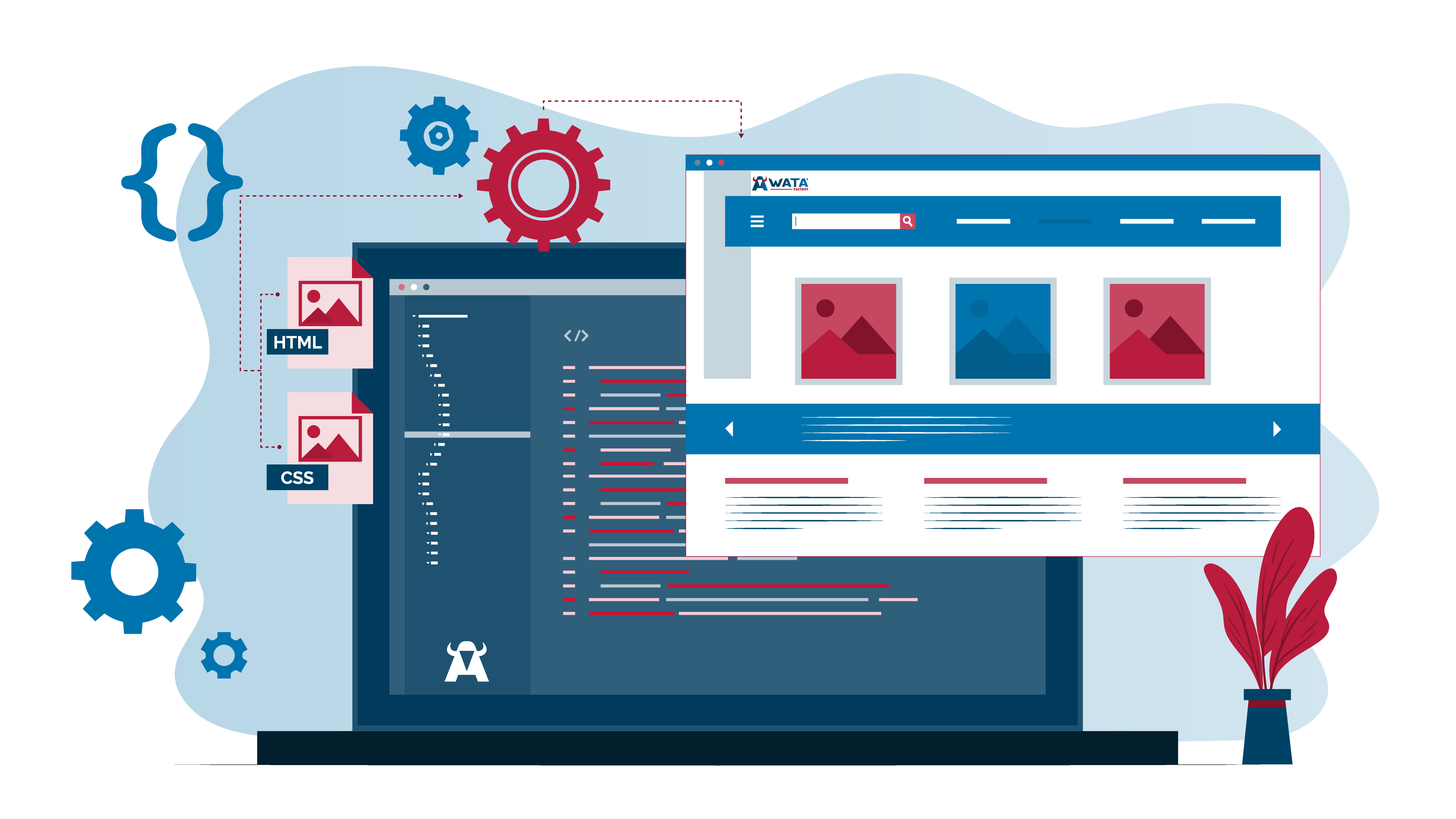Welcome to the first article in our new blog series exploring WordPress page builders in 2025. Page builders have become an essential tool for many WordPress users over the past decade and a half.
In this series, we will take a deep dive into the world of page builders – their evolution, popular options available today, how to integrate them into your site, performance considerations, security implications, and much more. Whether you’re a WordPress beginner looking to understand page builders or an experienced user wanting to learn best practices, you’ll find useful information and analysis in this series. Stay tuned for future articles where we’ll compare top page builder plugins head-to-head and make recommendations based on different use cases. To kick things off, let’s start by looking at the history of page builders and how they came to be so popular.
Evolution of Page Builders: A Brief History
In the ever-evolving world of web development, the rise of page builders has undoubtedly been one of the most transformative changes. Their journey from simple drag-and-drop tools to sophisticated design and development platforms is a testament to the rapidly changing needs of both developers and end-users. Let’s take a moment to journey through the evolution of these tools.
The Pre-Page Builder Era (Pre-2010s)
Before the proliferation of page builders, creating a website, especially on WordPress, required a fair amount of coding knowledge. Themes were the primary means of customisation, and any significant design alterations often required diving deep into CSS, PHP, or JavaScript. This era was marked by:
- Static Themes: Websites largely relied on static themes that had limited customisation options.
- Manual Coding: For deeper customisations, developers had to manually edit theme files, which could be both time-consuming and error-prone.
- Limited User Accessibility: Non-technical users often found it challenging to make even minor modifications without a developer’s help.
The Birth of Drag-and-Drop (Early 2010s)
As WordPress grew in popularity, there was a clear demand for tools that allowed more straightforward website design customisation. The early 2010s saw the introduction of the first drag-and-drop page builders. These tools were revolutionary because:
- User-Friendly Design: They allowed users to visually design their web pages without writing a single line of code.
- Module-Based Building: Features like text blocks, images, and buttons could be dragged onto pages, making design a modular process.
- Rise of the Freelancer: With these tools, freelance designers and developers could produce high-quality sites faster than before.
Advanced Features and Flexibility (Mid-2010s to Early 2020s)
The success of the early page builders spurred innovation. Newer tools introduced advanced functionalities, including:
- Responsive Design Controls: As mobile browsing became dominant, page builders adapted by offering tools to design for various screen sizes.
- Pre-built Templates: Many builders started offering pre-made design templates, further speeding up the design process.
- Theme Builders: Beyond just pages, some tools began allowing users to design entire themes, including headers, footers, and archive pages.
- Integration Capabilities: Integration with other plugins, tools, and platforms became a selling point, further embedding page builders into the WordPress ecosystem.
The Modern Era (2020s and Beyond)
Today’s page builders are more than just design tools. They’re comprehensive platforms that cater to both developers and non-developers alike. The modern era is marked by:
- Developer-Friendly Features: Advanced customisation using custom code, hooks, and filters is now standard.
- AI and Automation: The latest page builders increasingly leverage artificial intelligence to assist in design, content generation, optimisation, and user experience enhancements.
- E-commerce Integration: With the continued growth of online shopping, many page builders now offer seamless integration with e-commerce platforms like WooCommerce.
- Global Design Settings: Modern builders allow for site-wide design changes, making brand consistency easier to achieve.
- Performance Optimisation: Advanced caching, lazy loading, and code optimisation features have become standard.
- Accessibility Compliance: Modern page builders now include built-in accessibility features to help create WCAG-compliant websites.
The Importance of Page Builders in Modern Web Development
The digital age has brought with it an insatiable demand for websites. From small businesses to global corporations, from bloggers to online educators, the need for a robust online presence is more pressing than ever. Amidst this backdrop, page builders have emerged as pivotal tools, playing an indispensable role in modern web development. Here, we delve into why these tools have become such crucial assets.
Democratising Web Design and Development
- Levelling the Playing Field: Page builders have made it possible for individuals without a coding background to create and manage professional-looking websites. This democratisation means that even small businesses or solo entrepreneurs can have an online presence comparable to larger entities.
- Facilitating Creativity: Without the constraints of coding, users can focus on the creative aspects of web design, experimenting with layouts, colours, and graphics until they achieve their desired look.
Speed and Efficiency
- Rapid Prototyping: With page builders, creating mock-ups or prototypes becomes a breeze. Developers and designers can quickly showcase different design ideas to clients or stakeholders, facilitating faster decision-making.
- Streamlined Workflows: The drag-and-drop interfaces of most page builders mean that creating a webpage is often as simple as selecting the desired elements and placing them appropriately. This efficiency can significantly cut down project timelines.
Cost-Effective Web Development
- Reduced Development Costs: The ease and speed with which websites can be created using page builders often translate to reduced development costs, especially for businesses that might otherwise have had to hire external agencies or developers.
- Maintenance Savings: Many page builders offer easy-to-use interfaces for updates and changes, reducing the need for ongoing developer intervention for minor site modifications.
Flexibility and Customisation
- Tailored User Experiences: Modern page builders come equipped with a multitude of modules, widgets, and design options. This vast array of choices allows for the creation of highly customised user experiences, tailored to specific audience needs or brand guidelines.
- Extensibility: Many page builders are designed to be extensible, meaning developers can add custom plugins or modules to further enhance functionality.
Integration with Modern Web Tools
- Seamless Integrations: Whether it’s e-commerce platforms, email marketing tools, social media feeds, or AI-powered chatbots, most page builders now offer seamless integrations, ensuring that websites can have all the features they need without compatibility issues.
- API Access: For more advanced integrations, many page builders provide API access, allowing developers to create custom connections with other software or platforms.
Responsiveness and Mobile Optimization
- Mobile-First Design: With the majority of web traffic now coming from mobile devices, having a mobile-optimised site is essential. Page builders typically offer advanced tools to ensure designs look and function perfectly across devices of all sizes.
- Performance Optimisation: Beyond just design, many page builders also offer comprehensive features to optimise website performance, ensuring fast load times and smooth user experiences across all devices.
Future-Ready Features
- AI-Powered Assistance: Many 2025 page builders now include AI assistants that can help with content creation, design suggestions, and even SEO optimisation.
- Advanced Analytics Integration: Built-in analytics and conversion tracking help users understand their website’s performance without additional plugins.
In summary, page builders are not just tools; they are catalysts that have transformed the landscape of web development. They’ve bridged the gap between coding expertise and design aspirations, ensuring that in the modern web era, anyone can carve out their niche in the digital space with elegance and efficiency.
In this first article, we covered the origins and growth of page builders in WordPress over the past decade and a half. We learned how they have evolved from simple drag-and-drop editors into robust, AI-enhanced tools for building complete WordPress sites. Now that we understand the landscape, we’re ready to dive into the details in our upcoming articles.
Follow our blog for new articles for this series!


